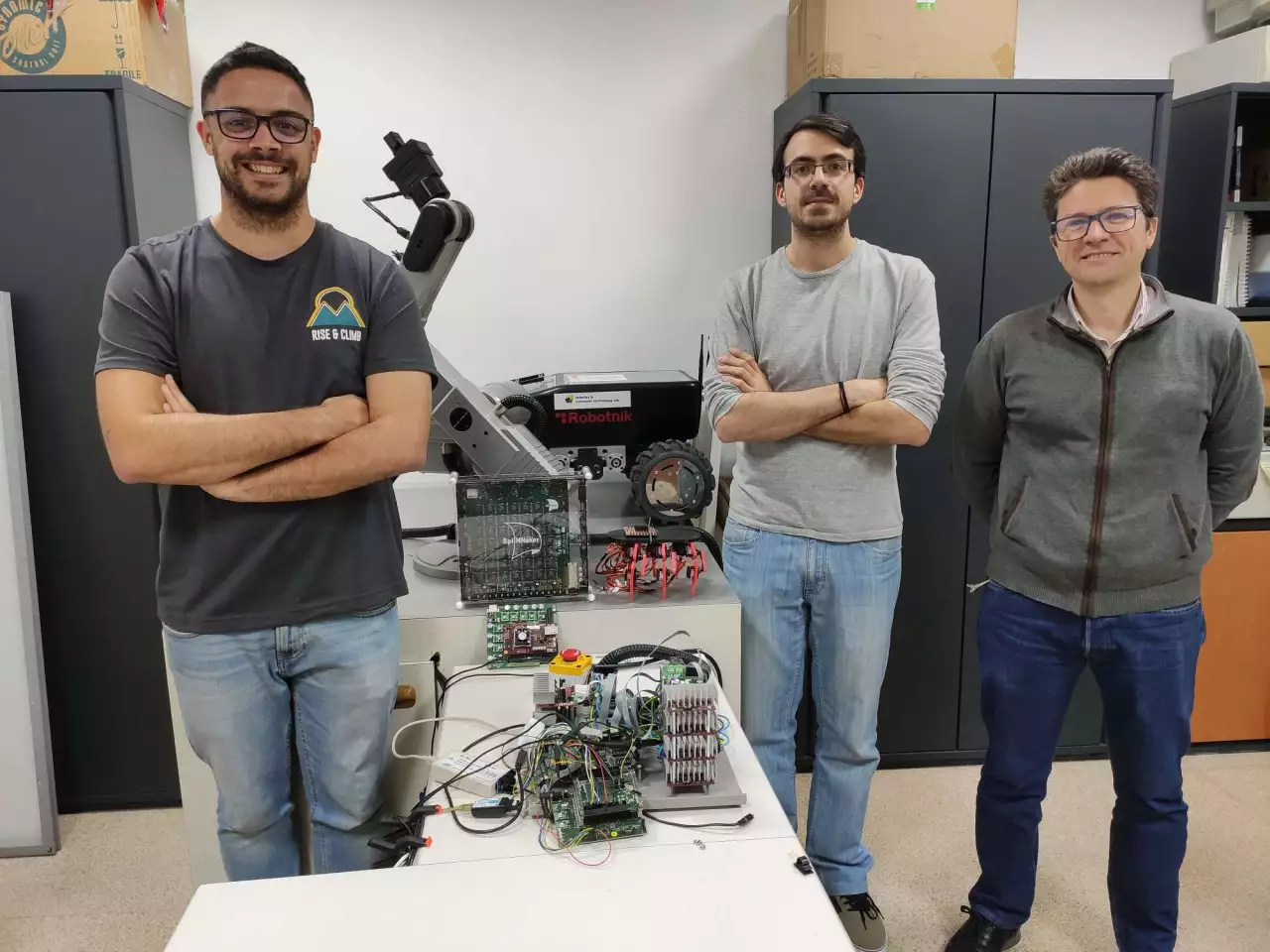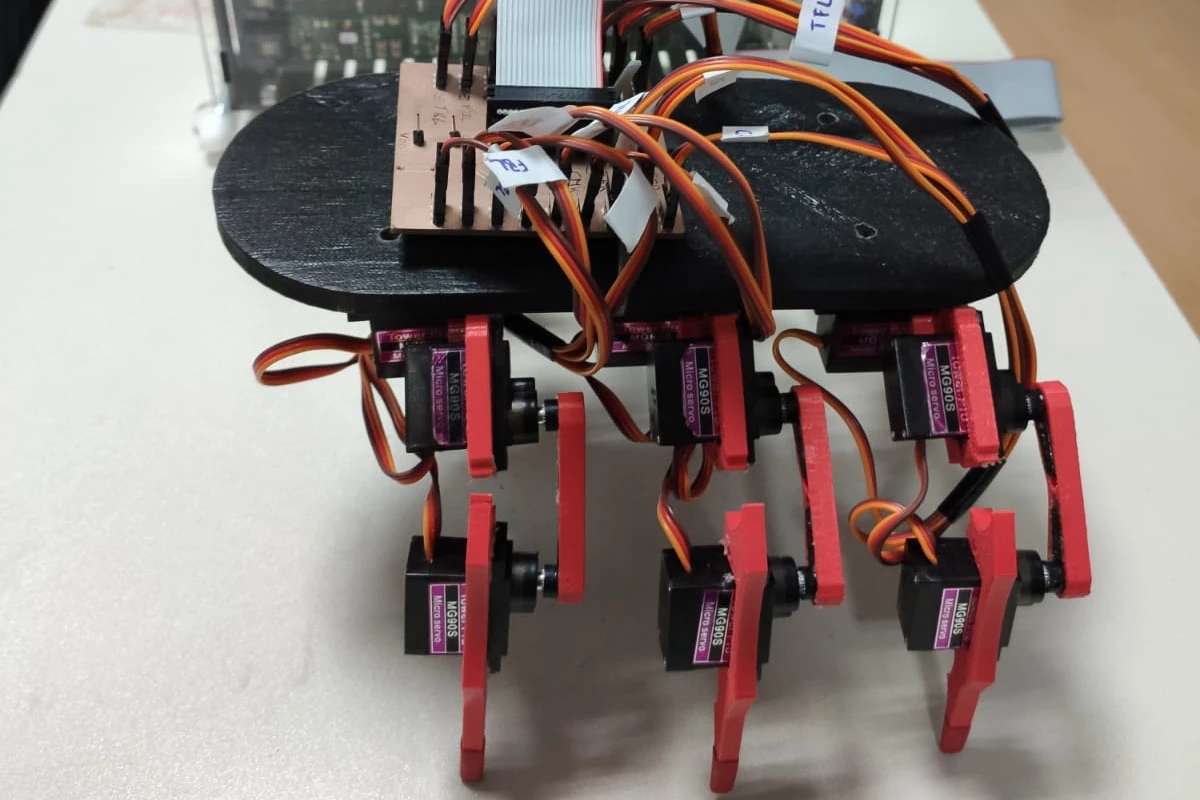Insects rapidly transition between different walking gaits, in response to external stimuli. Scientists have now created a small robot that can do the same thing, utilizing an integrated artificial neural network – the technology might ultimately find use in better-performing prostheses.
Known as the NeuroPod, the 3D-printed six-legged robot was developed by researchers from Spain's universities of Seville and Cadiz.
Its onboard microprocessor incorporates 30 artificial neurons, which presently receive electronic stimuli in the form of various signals relayed from an adjacent hard-wired computer. In response to those signals, the neurons instantaneously send commands to 18 servomotors that control the robot's legs.
As a result, as soon as a signal is received, the NeuroPod smoothly and instantly switches between walking, trotting and running gaits. The team claims that such is not the case with other walking robots, that have to pause while processing control commands before changing gaits – and when they do change, the process is often clumsy and awkward.

Plans now call for the bot to be equipped with visual and auditory sensors, that will allow it to respond to cues that it perceives within its environment. Down the road, its artificial neural network could be incorporated into items such as powered prosthetic arms, that quickly transition between performing different actions in response to the user's nerve impulses.
You can see the NeuroPod in action, in the Spanish-language video below.
Source: Fundación Descubre




